Soheila Sokhanvari: Rebel Rebel – Barbican, London
A review of Soheila Sokhanvari: Rebel Rebel at the Barbican in London. This small exhibition in the Barbican’s Curve space is a shrine to the women of pre-Revolutionary Iran.
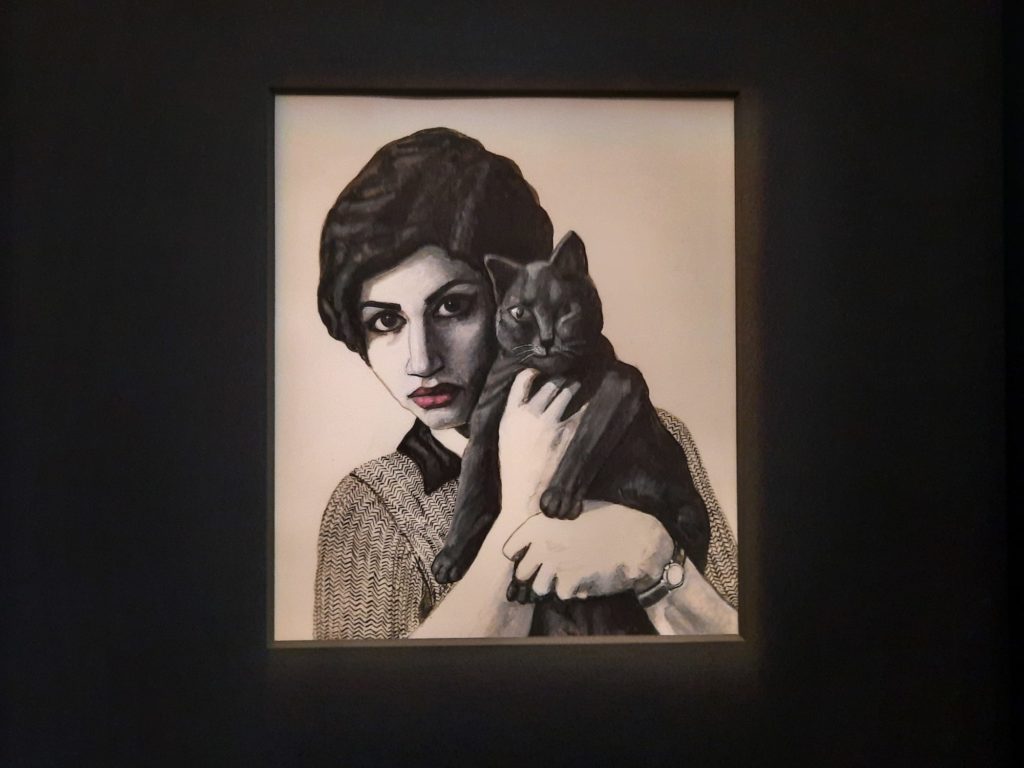
Soheila Sokhanvari
I enjoy the Barbican’s Curve space as an opportunity to discover new artists. The long, sleek, one room exhibitions are often provocative. And so far they never fail to broaden my artistic horizons a little. Today’s exhibition is no exception. It is a commission by a British/Iranian artist, Soheila Sokhanvari. Her exhibition, Rebel Rebel, celebrates women from pre-Revolutionary Iran. More than that, it is a devotional space, combining traditional Islamic geometric patterns with miniature portraits of 28 women. An artistic practice which expresses visually the tightrope these women walked at a time when Iran embraced fully some aspects of Western culture while firmly rejecting others.
Sokhanvari is an Iranian-born, British/Iranian artist. She fled to the UK as a child, a year before the overthrow of the Pahlavi regime. She studied at Goldsmiths in my local neck of the woods in South East London. There is precious little information about her online. But what I have found indicates that much of her work falls into a broadly similar category. Like many artists, she engages with her personal (hi)story: in this case politically-engaged art which responds to Iranian history and politics in particular.
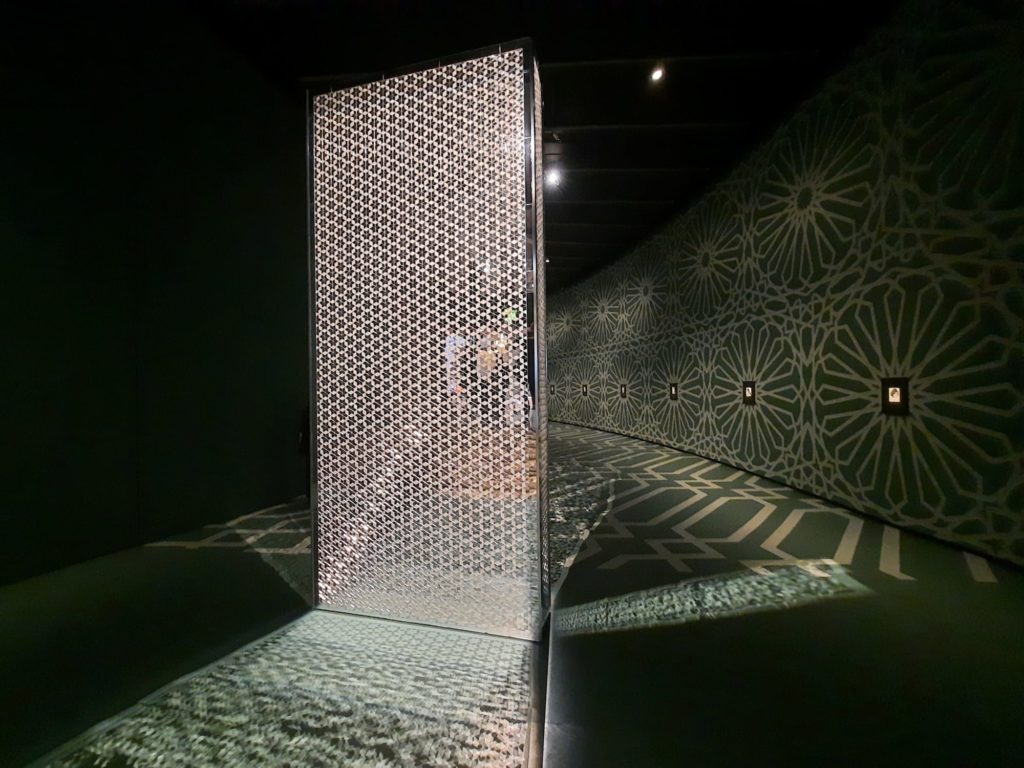
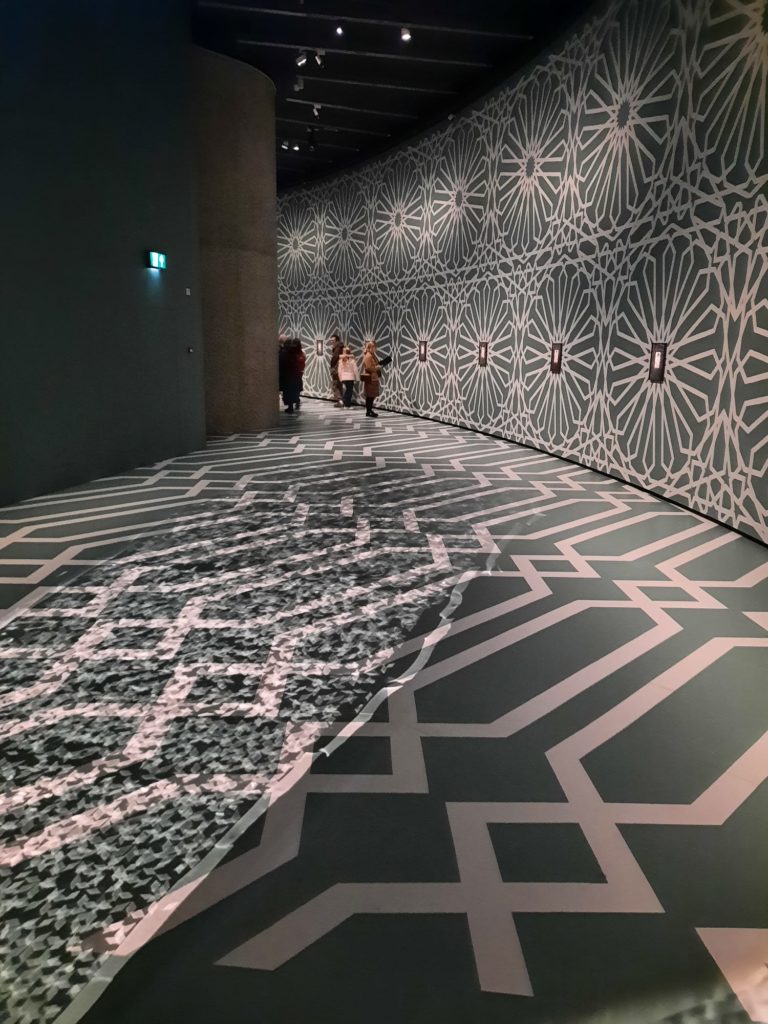


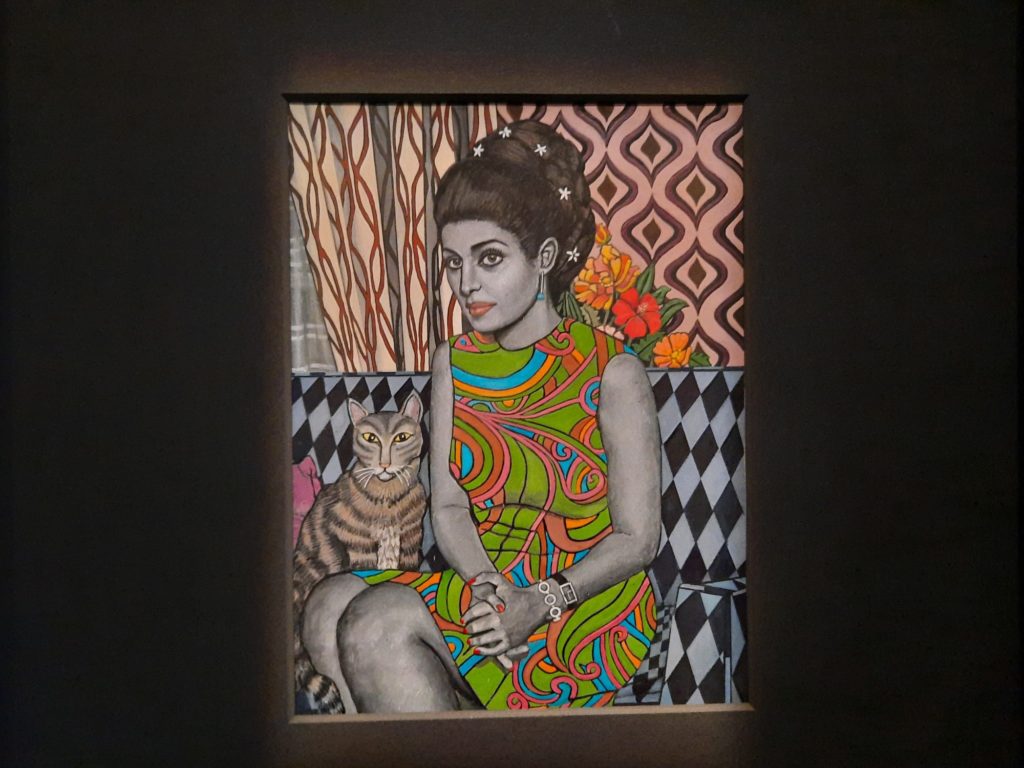
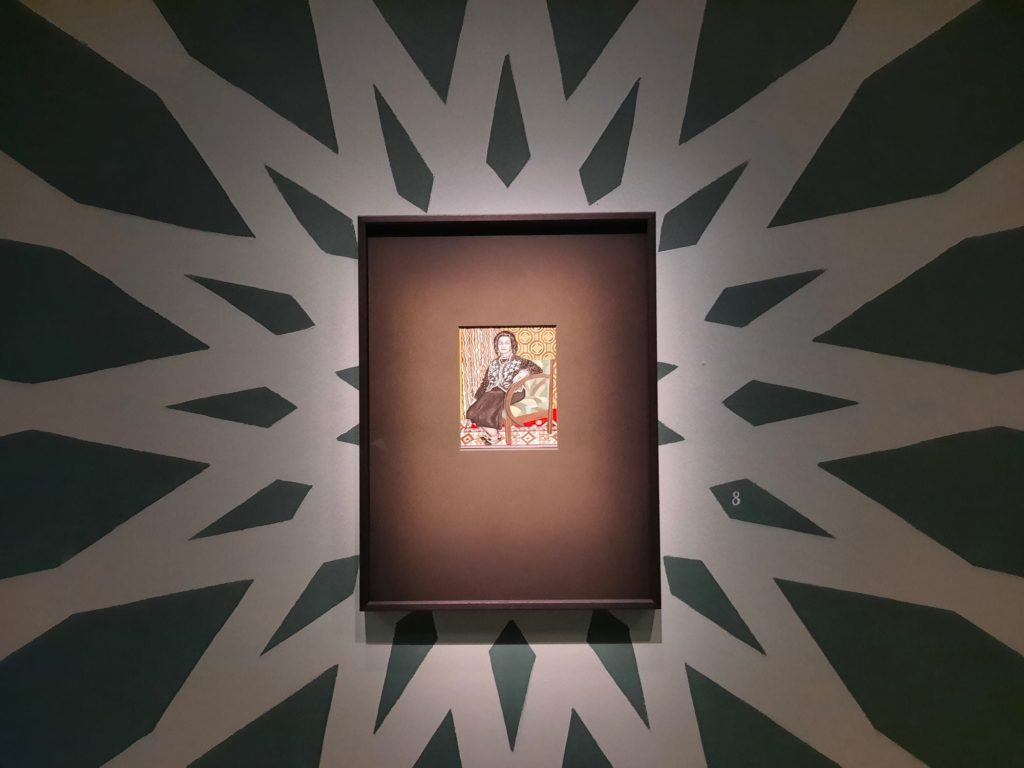
Rebel Rebel
As I mentioned earlier, the exhibition Rebel Rebel, a Barbican commission, consists of portraits of women against a geometric background. The geometric background, hand-painted, hails back to traditional Islamic designs. In a religious tradition which rejects figurative depiction, these patterns are designed to “dizzy the beholder so that they could contemplate the vastness of the universe and the greatness of God.” In this case the patterns are certainly striking, and draw the eye to Sokhanvari’s delicate portraits painted on vellum with a squirrel-hair brush.
Each of the portraits depicts an Iranian woman in Western dress, the styles indicating that these are the women of pre-Revolutionary Iran. They include Roohangiz Saminejad, the first unveiled Iranian woman to appear in a ‘talkie’ film. An act so transgressive it had to be shot in India and Saminejad lived much of her life in anonymity to escape harassment. They also include modernist poet Forough Farrokhzad, intellectual and writer Simin Dāneshvar, and many more. There is little information about the women within the exhibition itself: you have to scan a QR code to learn more. The experience of viewing the exhibition is one of contemplating each woman in turn. What clues do we have to her inclusion in this wall of ‘rebels’? How did she fare walking the tightrope between Western style and culture and traditional Iranian/Islamic values?
Lastly, there is a multimedia aspect to the exhibition. There is a poignancy to the soundtrack of iconic singers (sound design by Marios Aristopoulos) as it is still illegal today for women to sing in public in Iran. A comfortable seating area at the end of the Curve allows viewers to sit and watch recordings: some presumably from performers in exile as the fashions date them to after 1979. Curiously, there are also holograms (by Stephen and Daniel Swanton). At first I didn’t know what the geometric machines dotted around the exhibition space were. Peering inside one, I was surprised to find a little hologram lady dancing: another transgressive act.


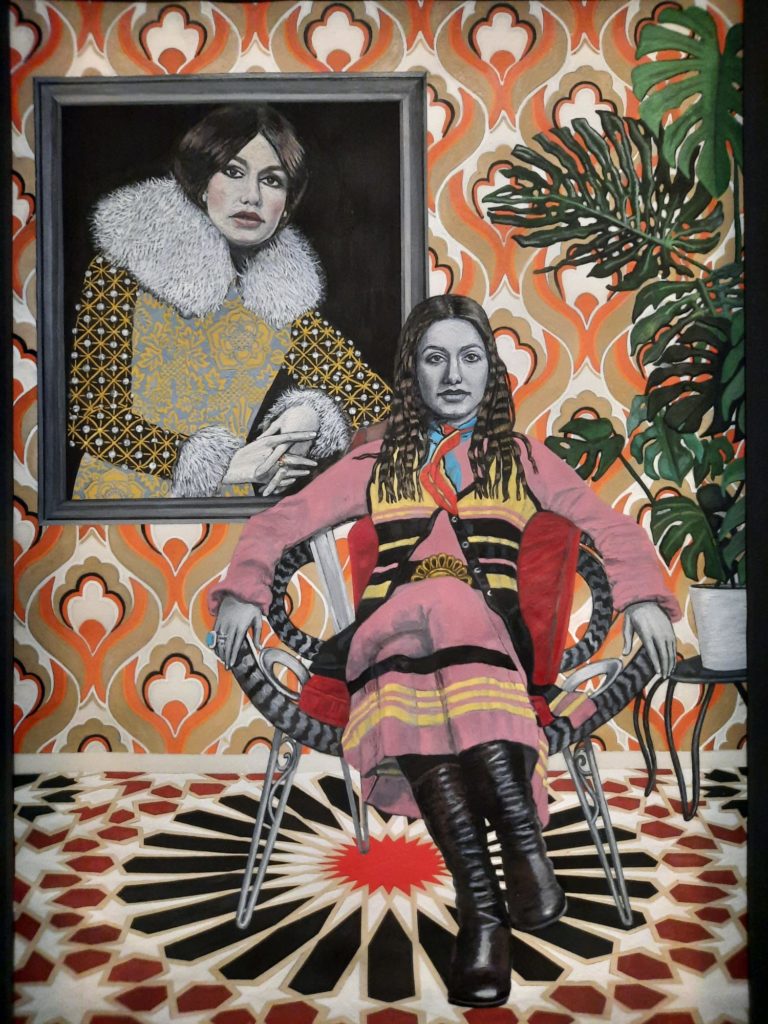
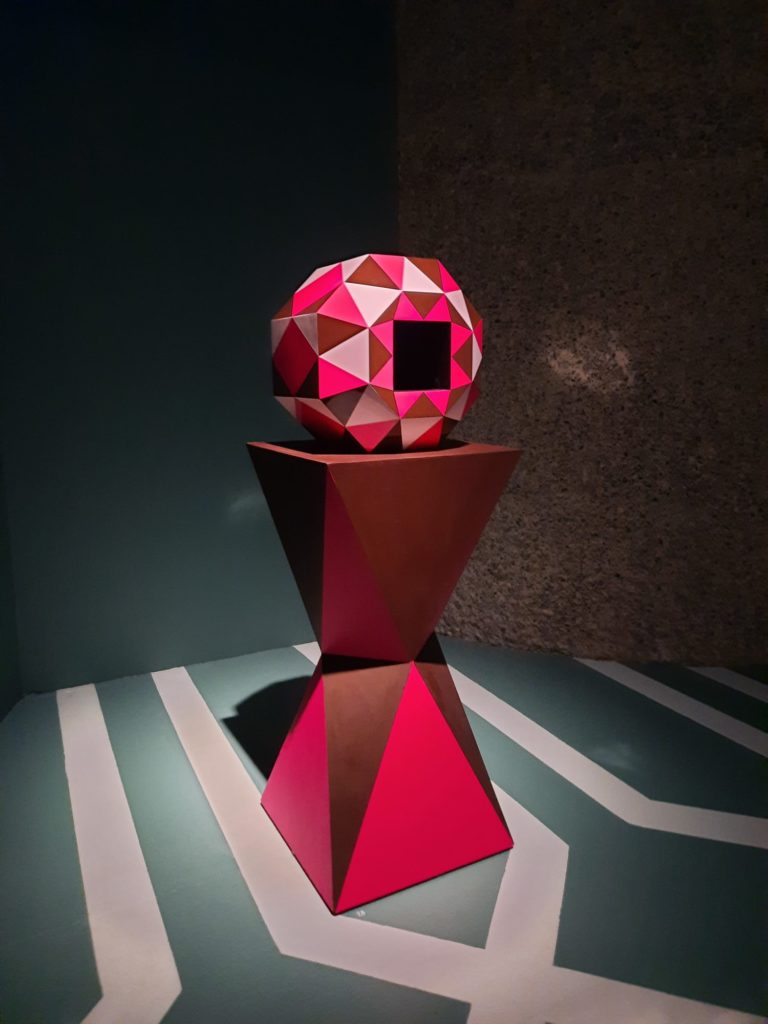

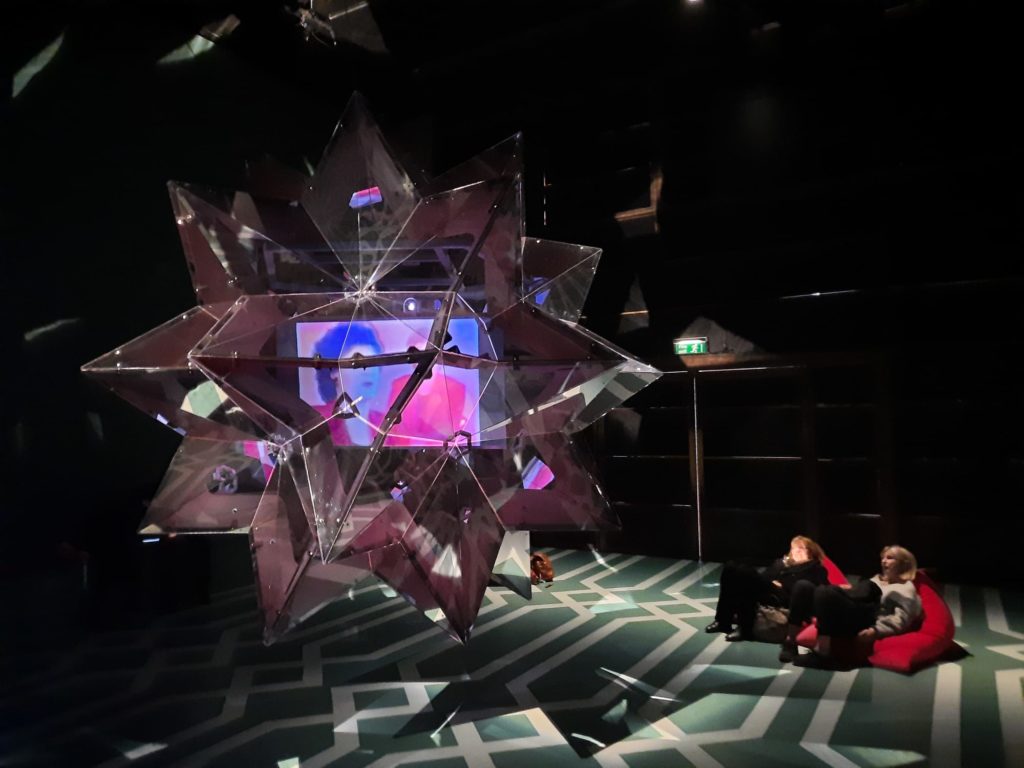
Final Thoughts On Rebel Rebel
I found Rebel Rebel to be a thought-provoking exhibition. With the current protests in Iran, what better moment to explore self-expression and self-determination for Iranian women through an artistic lens? The geometric designs mean that it makes good use of the entire Curve space: not always an easy task for artists. I didn’t feel, on the other hand, that the soundtrack and holograms entirely gelled with the contemplative and meticulous nature of the artworks themselves. They certainly add another dimension to the overall picture, but in my opinion might have been better in a separate space.
Like many exhibitions in the Barbican Curve, this one is free. It’s easy to pair with another activity at the Barbican (like seeing this). Or if you’re at a loose end in the City of London. The exhibition adds depth to the news coverage of what’s happening today in Iran: a gallery of trailblazing women who have gone before.
Salterton Arts Review’s rating: 3/5
Soheila Sokhanvari: Rebel Rebel on until 26 February 2023
Trending
If you see this after your page is loaded completely, leafletJS files are missing.

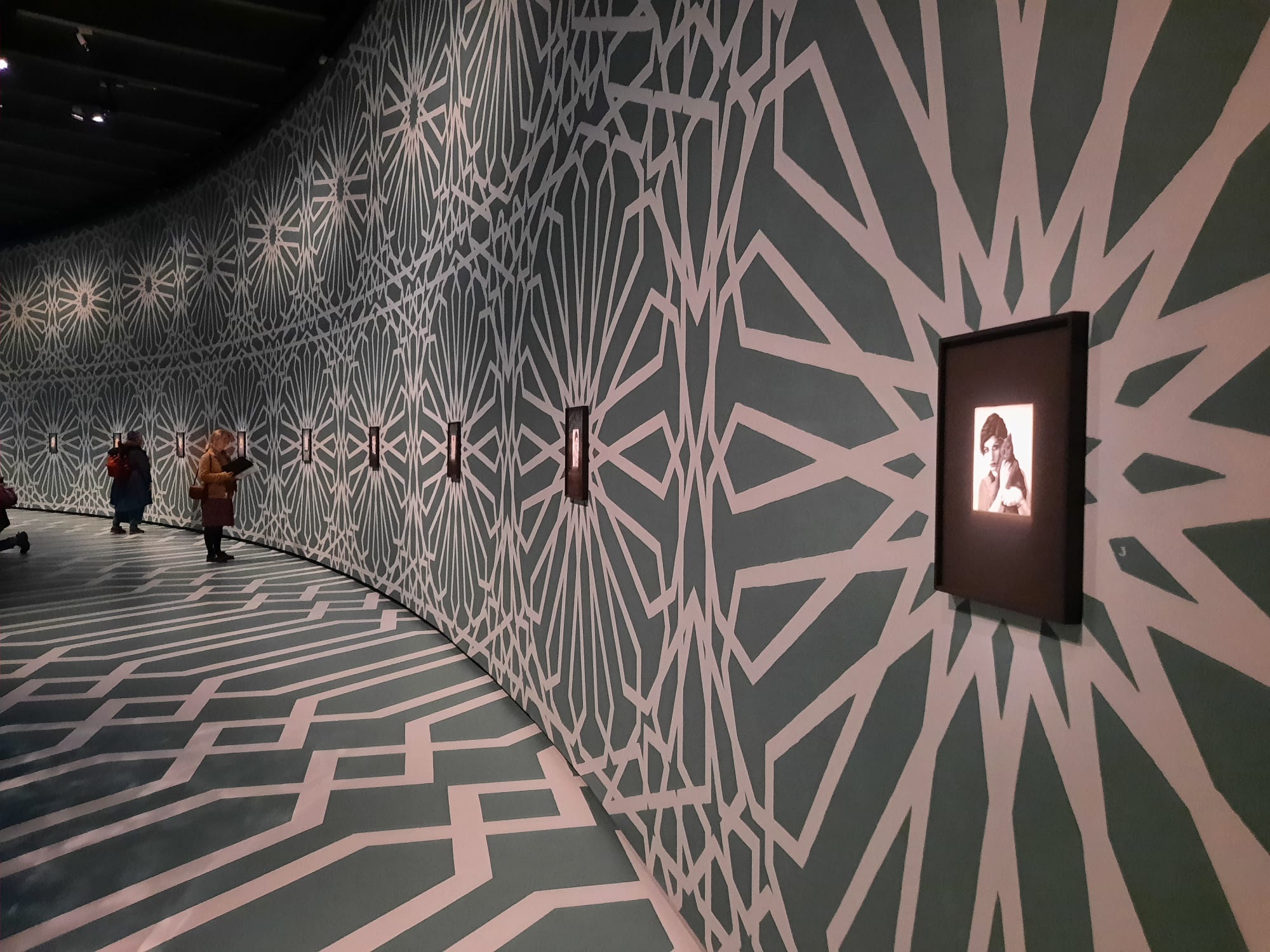
wow – it looks wonderful – the background pattern makes such a big statement as the setting for the portraits which are fascinating. Poor Iran has such tyrants and perverse ideas strangling it.